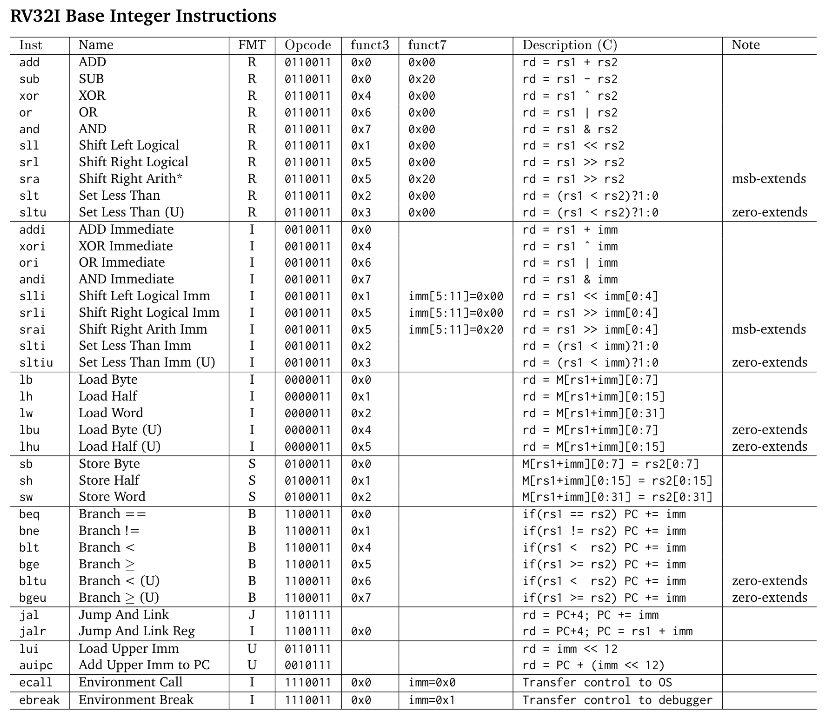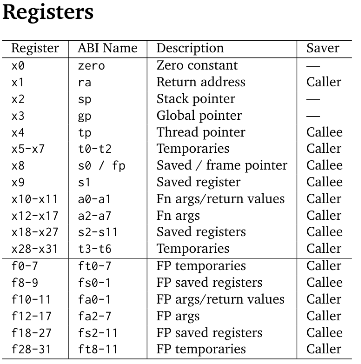Why do we need open standards for CPU Architecture ?
- We want to allow users to see all the parts of the architecture without any proprietary constraints.
- We want to have the rights to modify and distribute without paying any licensing fees and constraints in sharing.
- With open standards it’s easier to build on top of others work and possibly build CPU designs custom made for certain tasks.
What is RISC-V ?
RISC-V is just an open source ISA (Instruction Set Architecture). An ISA is the software interface for the hardware. A single ISA can have many hardware implementations. In technical terms as ISA defines set of Instructions and how they behave such as:
- Data types
- Registers
- Addressing modes
- memory models
- Protection levels
- How is I/O are done
- Virtual memory
- Exceptions
Another important factor to understand is that RISC-V is a standard and not an implementation. This means that the entire ISA is defined in a huge latex file which can be found on Github.
Repo link: https://github.com/riscv/riscv-isa-manual
The RISC-V is a well organized ISA and is divided into various categories and extensions in order to keep it as a modular design. The RISC-V is maintained the non profit organization called RISC-V foundation.
“RISC-V in contrast was made specifically to be easy to teach while pragmatic enough to actually allow the implementation of high performance microprocessors.”
Few companies working on RISC-V
- NVIDIA: using RISC-V in it’s GPU
- SiFive: Startup that allows you to create your own RISC-V board or use exsisting models they provide with great toolkits around them.
- Western Digital: Focusing on building custom RISC-V cores.
Complier support for RISC-V ISA
How is the RISC-V ISA organized
In this section we look into how RISC-V is organised
RV N (Extension letter)
- RV stands for RISC-V
- N - Number of bits (Ex: 32 bits)
- Extension letter: This is the Extension for the instruction sets (I stands for Integer)
Example Base ISA
RV32I, RV64I, RV128I
Standard Extensions
- M: Math
- A: Atomic
- F: Floating Point
- D: Double Precision Floating Point
- G: General Purpose (Includes, Integer, Math, Atomic, Floating Point and Double Precision Floating Point)
Linux supports
RV64G
This is called as RISC-V 64 bit General Purpose
Lets talk a bit indepth of RV32I
RV32I is a base ISA and the easiest to understand. RV32I means it’s RISC-V 32 bit Integer ISA.
Registers: x0-x31
(x0 is hardwired to 0)
Each register is 32 bits which can be called as 1 word.
 Fig 1.0 Simplified schematics of RV32I
Fig 1.0 Simplified schematics of RV32I
Now we will recall the basics and try to understand how to read an instruction.
add rd,rs1,rs2
- add: is the opcode
- rd: is the destination register
- rs1: Source register 1
- rs2: Source register 2
 Fig 1.1 Assembly instructions for RV32I
Fig 1.1 Assembly instructions for RV32I
 Fig 1.2 Registers for RV32I
Fig 1.2 Registers for RV32I
Interesting research papers
Implementing RISC-V System-on-Chip for Acceleration of Convolution Operation and Activation Function Based on FPGA (Field programmable gate arrays): FGPA are mostly for application specific integrated circuits. An example would be Intel using FGPA to prototype new chips. The objective of the paper was to design a RISC-V processor for specific tasks such as Convolution functions and activation functions. The result was that the RISC-V processor was faster than CPU + co-processor mode and used lesser than the CPU + GPU mode.
Towards deep learning using Tensorflow lite on RISC-V: This paper focuses on ISA extensions customized for machine learning kernels. The software infrastructure implemented was optimized for neural network execution. The following was integrated into Tensorflow lite. The result was that instructions was reduced by 8X.
A compiler comparison in the RISC-V ecosystem: Comparing LLVM and GCC performance on RISC-V. LLVM and GCC produce same binary size but both have different execution times.
Interesting Open Source projects
- RISCBoy: It is an open-source portable games console, designed from scratch. RISC-V compatible CPU. Has raster graphics pipelines and display controllers. It consists of other infrastructure such as memory controllers and GPIO ports. It also consists of a CAD design of the PCB layout.
- Potato: The Potato Processor is a simple RISC-V processor written in VHDL for use in FPGAs. It implements the 32-bit integer subset of the RISC-V Specification version 2.0.
- Vulcan: RISC-V instruction set simulation built for education using flutter.